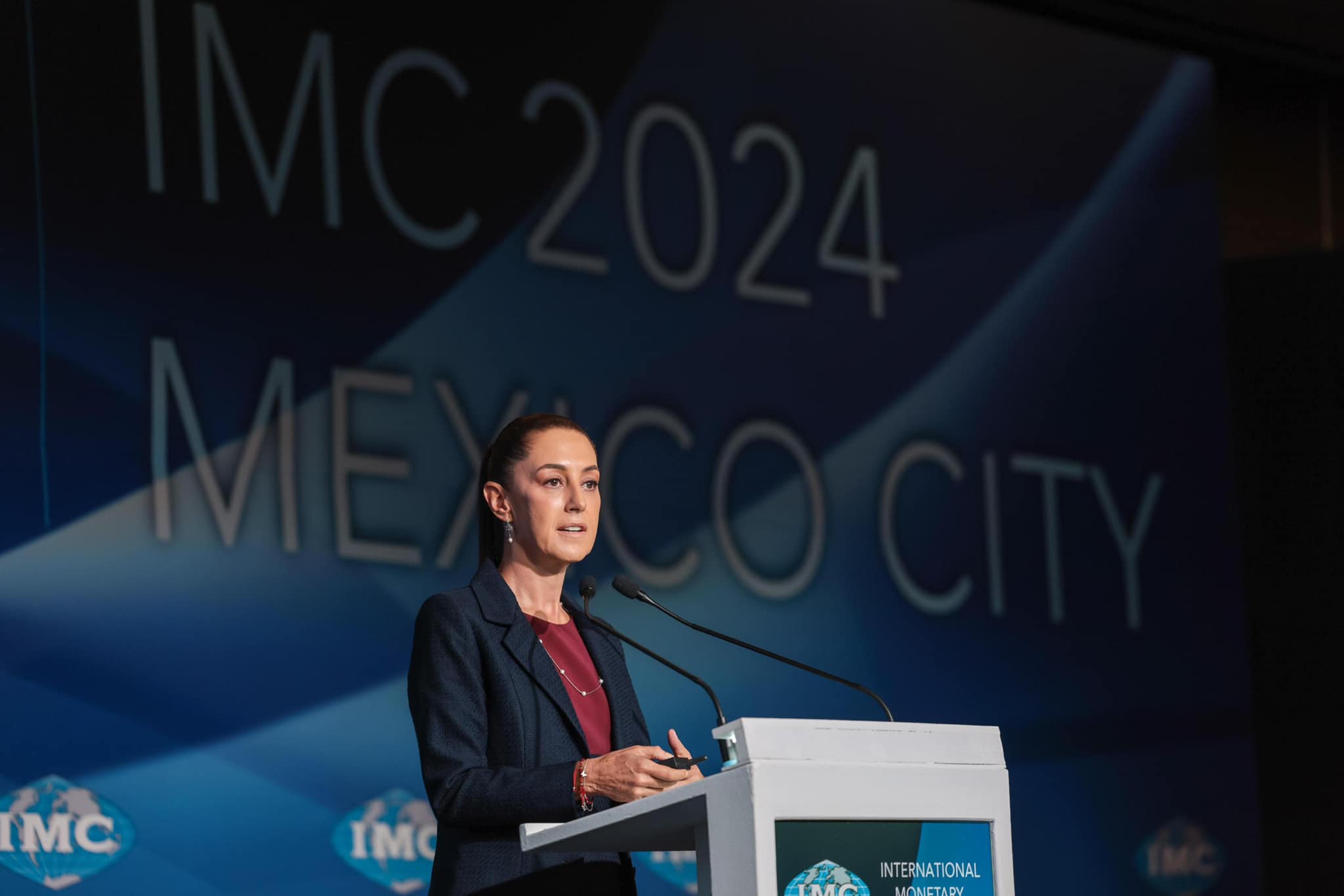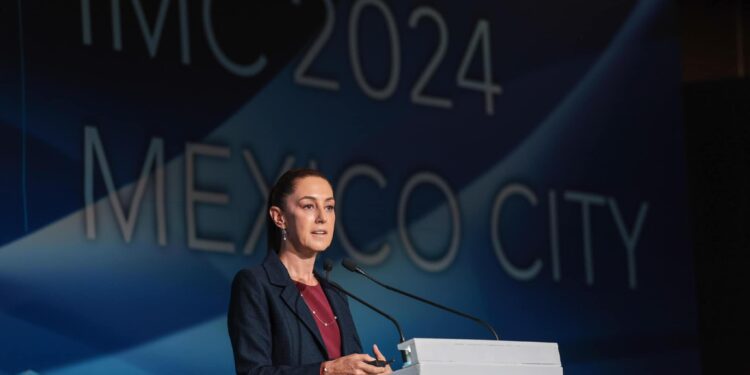
Mexican President-elect Claudia Sheinbaum. (Photo: Claudia Sheinbaum/Facebook)
By Policy Options
Canada is at a global crossroads fraught with escalating geopolitical tensions, challenges to the rules-based international order, the rise of the far right and nearshoring.
Despite the possibility of a second Trump presidency and the rise of U.S. protectionism under both the Trump 1.0 and Biden administrations, it can be argued that Canada’s interests increasingly lie in North America.
In this context, Canada must carefully assess the evolving balance of opportunities and risks for a revived Mexico-Canada partnership.
Long overlooked as a partner
Canadian leaders and citizens still have limited knowledge and understanding of our Mexican partner despite Canada being a signatory to the Canada-United-States-Mexico Agreement (CUSMA), which replaced NAFTA in 2020.
Nearshoring is already having major impacts in North America. Value chains are being reconstructed to reduce their geographic footprint as companies increasingly seek suppliers within the North American region.
A demonstrable, rapid increase in inter-regional trade and investment relations has rebounded following a downturn during the pandemic. In 2022, goods exchanged among the three CUSMA member countries reached a record high level of US$1.5 trillion.
Mexico has so far emerged as the main “winner” in this process, overtaking Canada as the United States’ top trading partner. It is a growing site for new foreign direct investment. (Canada is benefiting somewhat in terms of new investments, but to a much lesser degree.)
Mexico saw a 442-per-cent increase in foreign direct investment during the first half of 2023 compared with the last two quarters of 2022. In the same period, Canada’s share of global foreign direct investment increased by 21 per cent while China’s declined by 33 per cent.
Canada remains Mexico’s second top trading partner, but at 2.7 per cent of Mexico’s total trade in 2022, Canada’s trade remains a tiny fraction of that country’s trade with the United States, which accounts for 78.1 per cent of its total.
That said, Canada-Mexico trade did grow by 70.81 per cent between 2013 and 2023.
Mexico poised to pursue its historic boom
Partly fueled by a boom in foreign investment, Mexico’s economy is experiencing strong growth following a dramatic downturn during the pandemic. Mexico’s GDP grew 3.9 per cent in 2022 and 3.2 per cent in 2023.
Real non-residential construction has increased by half since prior to COVID-19. Mexican manufacturing output also continues to increase, rising five per cent since 2018, especially in export-oriented industries. Output is up by nearly a quarter in computer production, and 15 per cent in appliances and electrical equipment.
Despite anti-migrant policies in the United States, remittance rates from Mexican migrants living abroad, primarily in the U.S., are also booming.
At the same time, poverty rates in Mexico are declining. CONEVAL, Mexico’s social development evaluation institution, stated that “multidimensional” poverty rates declined substantially between 2018 and 2022, although rates of extreme poverty remained almost unchanged at around seven per cent.
Improvements in poverty rates reflect not just the economic boom but policies of the current government, which has increased the minimum wage and supported a range of social programs aimed at the country’s poorest. New labour provisions attached to the CUSMA, in addition to labour reforms adopted under the current and previous Mexican administrations, challenge the corruption that kept wages and benefits extremely low.
The government of President Andrés Manuel López Obrador also supported a dramatic increase in investment in infrastructure projects, particularly in the country’s south, which suffers from high poverty rates and which has historically been excluded from federal spending priorities.
Such progress is poised to continue, as president-elect Claudia Sheinbaum Pardo won a convincing victory in Mexico’s presidential elections under the party banner of AMLO, who will step down at the end of his current term.
Promising potential for Canada-Mexico relations
Mexico still faces significant challenges. Primary among them are high rates of violence, widespread human-rights violations and serious problems with the rule of law.
Homicide rates declined only slightly under AMLO’s presidency, from a high of 30 per 100,000 in 2018 to 28 per 100,000 in 2021, according to the World Bank. And femicide rates (the intentional homicide of a person because she is a woman) and gender-based violence continue to increase.
As well, many of AMLO’s signature investment projects, such as the Maya train, the Dos Bocas oil refinery and the Tehuantepec interoceanic corridor have encountered fierce criticism and widespread protest for their impact on the environment and Indigenous rights.
Will Biden test Mexico’s hand’s-off approach to bilateral relations?
Trump’s economics on NAFTA are not all wrong
Is the USMCA just a lesser NAFTA?
How North America could be a force for global good
Sheinbaum’s election represents a promising moment for a deepening of the Canada-Mexico relationship. She is likely to adopt a calmer and more technocratic political style than her predecessor when she assumes office on October 1, 2024. She has also signalled she may take a different road on energy and environmental issues.
Canada and Mexico have both adopted feminist foreign policies, which provides a promising normative framework for shared diplomatic engagement in support of the rights of women and gender-diverse individuals.
Canadian Foreign Minister Mélanie Joly was quick to visit Sheinbaum after her election victory to discuss shared interests and challenges. That conversation is set to continue. Canada is scheduled to host the next North American Leaders Summit this year. And, both countries will contribute to the six-year review of CUSMA, which is due to take place by July 1, 2026.
Together, these developments provide the opportunity to emerge from a longstanding U.S.-centric view of North America and forge a renewed partnership built on common interests. Together, Canada and Mexico can seek ways to limit the impacts of short-sighted U.S. protectionist measures and encourage the deepening of trilateral continental ties within a framework of inclusive trade.
This article is part of the Trade in an Era of Global Insecurity special feature series.
JOIN POLICY OPTIONS AND SEVERAL AUTHORS OF THIS SERIES FOR AN ONLINE DISCUSSION ON TRADE IN THIS ERA OF GROWING GLOBAL SECURITY CONCERNS SEPT. 16, AT NOON ET.
Click here to register.
This article first appeared on Policy Options and is republished here under a Creative Commons license.
Source link : http://www.bing.com/news/apiclick.aspx?ref=FexRss&aid=&tid=66e92aa539da4f5f83fa4fc15d842f22&url=https%3A%2F%2Fcanadianinquirer.net%2F2024%2F09%2F17%2Fwe-need-to-deepen-our-relationship-with-mexico%2F&c=8121098620300306390&mkt=en-us
Author :
Publish date : 2024-09-16 19:54:00
Copyright for syndicated content belongs to the linked Source.






